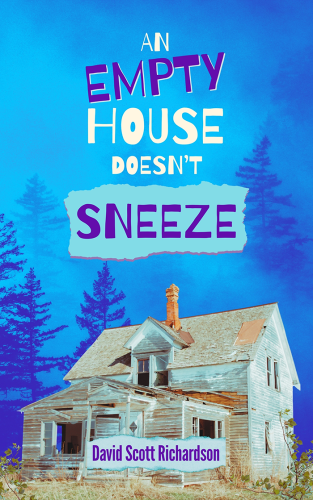An Empty House Doesn’t Sneeze renders life on the home front through the watchful eyes of 15-year-old Scotty Johannsen as WWII rages across the globe. Against the backdrop of blackouts, bomb shelters, rationing, and victory gardens, Scotty and his friends follow the rhythms of yesteryear, weaving their wartime worries through the “wilds” of Seattle’s Ravenna Park, where their imaginations run free.
Into this fragile balance a neighborhood threat emerges: Someone is lighting fires during the mandatory blackouts. Scotty, whose father is an air raid warden, is soon caught up in the firebug mystery and tries to smoke the arsonist out. When the local bully throws suspicion on Scotty’s draft-age brother, and when even his best friend’s actions don’t seem to add up, Scotty must navigate a moral and ethical thicket while treading a path toward maturity. Even as scarcity slips into every nook and cranny, An Empty House Doesn’t Sneeze celebrates a youthful spirit and hearkens to simple pleasures, where free time and family abound.
David Scott Richardson’s An Empty House Doesn’t Sneeze is a work of historical fiction set in 1943 in the Pacific Northwest. A heartwarming and playful coming-of-age adventure, this novel is suitable for MG/YA and the young at heart. It contains no gratuitous language, but there are a few slurs that are true to the historical setting and swear words—in keeping with the characters and story.
Targeted Age Group:: 12-18+
What Inspired You to Write Your Book?
Relatively late in life as careers go, I became a public-school teacher. Faint echoes of WWII lingered outside the curriculum and periodically bubbled up in the form of student questions or sometimes, a disturbing remark about Jews, suggesting that the vaccination of the war hadn’t been completely effective. Even though a few students had read Anne Frank: The Diary of a Young Girl or Maus: A Survivor’s Tale, most knew nothing about the war. Few had any idea of what Adolf Hitler represented and even fewer could fathom shortages that led to rationing in America. After all, sixth graders are eleven and twelve years old. Not even Vietnam is in their living memories. Even so, a surprising number of students were curious once the subject came up. Very few, it seemed, had ever talked about WWII with an adult.
Young people aren’t typically endowed with an appreciation of history, and, as a young country, many Americans seem unaware of how we got where we are today. It’s appropriate that the young are looking forward, but there’s a balance to be achieved between blindly forging ahead and reading the charts drawn by those who’ve navigated before us. In fog-shrouded waters, it’s difficult to decipher rocky shorelines. Some basic understanding of history is the keel that keeps us upright in heavy seas.
In An Empty House Doesn’t Sneeze, I wanted to keep some of this history alive and present it in a way that younger readers might relate to, hence the mystery format. During my teaching career, those who remembered WWII firsthand began passing on, and their children, like me, were getting on in years as well. Thinking a work of historical fiction held some promise, I focused on the home front, hoping to forge a connection with those who were more than a generation unborn when the world went to war.
How Did You Come up With Your Characters?
Most of Scotty’s friends are montages and embellishments from my childhood, though we really did have a neighborhood bully, and I had a neighbor named Burr. Scotty’s family is loosely modeled after my own family. Aunt Val is based on my actual aunt, who was a real-life Rosie the Riveter at Boeing during the war years. Most of the characters just popped up when I needed them.
******************************
Buy this book Print Edition at Amazon
Buy this book Print Edition at Barnes and Noble
Links to Purchase eBooks – Click links for book samples and reviews
Buy this book On Amazon
Buy this book on Barnes and Noble/Nook
Buy this book on Smashwords
Buy this book on Kobo
All information was provided by the author and not edited by us. This is so you get to know the author better.

